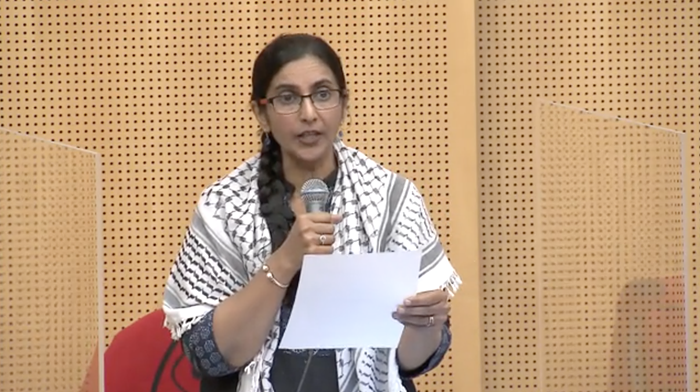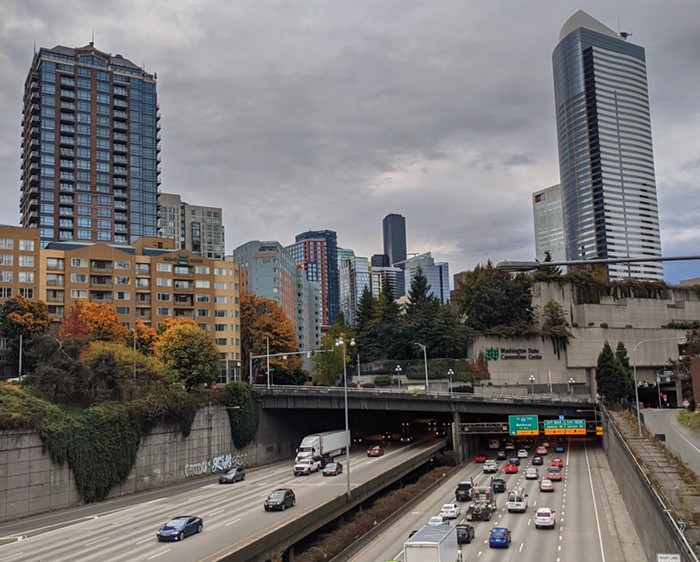
On February 22, more than two months after Google was officially told to comply with Seattle's unique law on election ad transparency, a binder full of digital ad details arrived on the desk of Seattle Ethics and Elections Commission director Wayne Barnett.
The roughly 60-page binder of previously unavailable Google ad info is notably different from the meager disclosure that Facebook sent Barnett in early February. ("Their two-page spreadsheet," Barnett said of Facebook, "doesn’t come close to meeting their public obligation.")
Whether Google's binder fully meets the requirements of Seattle's law remains to be seen. I have yet to page through the full binder myself. Barnett, for his part, is still evaluating its contents.
Facebook's disclosure back on February 2 was full of problems. Google, in a letter to Barnett (.pdf), admits that its binder of political ads from the 2017 Seattle municipal elections is incomplete due to certain information not being "readily available" when it comes to "a small number of ads." But the company says it is working to remedy those omissions.
While Google appears to have now shared a lot more about local election ad purchases than Facebook, there are signs that Facebook, too, may want to get more detailed in its attempt to comply with a law that Barnett says the tech giant is violating.
Two days before the Google binder arrived, a Seattle lawyer who has represented both Google and Facebook in this matter, Ben Stafford of Perkins Coie, reached out to Barnett to say that Facebook is currently "planning to produce some supplemental data." Facebook and Barnett are scheduled to have a conversation about that today.
In the meantime, there are several things of note on one page from the Google binder that's been shared with The Stranger so far.
That page, shown in part above, concerns a video ad placed through Google by "People for Jenny Durkan," the well-financed Independent Expenditure campaign that helped Seattle's current mayor win election. (An Independent Expenditure campaign is basically the local version of a Super PAC)
Here's a copy of the ad that's still up on Google's subsidiary, YouTube:
According to campaign finance disclosures, People for Jenny Durkan spent more than $200,000 on all kinds of digital ads aimed at Seattle voters last year, including the above ad. (That's out of more than $860,000 in total spending by the group.)
But click on over to People for Jenny Durkan's disclosures to the Seattle Ethics and Elections Commission and you'll see why it's so important that digital ad companies like Google and Facebook also be required to make their own detailed disclosures.
If you search through the list of vendors disclosed by People for Jenny Durkan, you won't find Google or YouTube mentioned at all.
That's because the money for this Google ad apparently went through third parties—in this case, multiple digital advertising subcontractors—and then onward to Google.
This is quite normal. Political campaigns often have subcontractors that run their digital ad strategy, and those subcontractors sometimes have their own subcontractors.
But in theory, by using this subcontracting method a 2017 Seattle campaign or Independent Expenditure could have bought a dirty or misleading Google ad for, say $10,000; masked or flat-out omitted who was responsible for that Google ad; later disclosed in the required filings to the Seattle Ethics and Elections Commission that they'd spent $10,000 on simply "digital ads" through a subcontractor (without mentioning what platform the ads ran on); and thereby made it difficult to ever trace the dirty or misleading ad back to its true source.
This particular pro-Drukan ad was totally upfront about where it came from. It wasn't trying to hide anything, including its financial backers. If memory serves, it ran on television as well (and on broadcast television, unlike on digital platforms, there's a long tradition of regulated political ad disclosure). But here's another thing we didn't know about this video ad until the recent binder from Google arrived: in exchange for payment of just over $20,000 to Google from People for Jenny Durkan, the company displayed this ad somewhere between 1 million and 5 million times.
Let's take the low end of that estimate: 1 million displays.
In the entire City of Seattle, there are only 435,662 registered voters.
This means that for just over $20,000 the Independent Expenditure backing Durkan was able to have this one video ad displayed often enough that every registered voter in the City of Seattle could have seen it twice. Sure, not every registered voter in Seattle is reachable by Google ads. But the point is that this disclosure from Google highlights the scale of the pro-Durkan digital ad effort—which is itself a reflection of the vastly increased spending on, and reach of, online political ads in our local elections.
Again, the pro-Durkan IE spent a grand total of over $200,000 on digital ads.
Just one tenth of that digital ad spend—$20,000—resulted in enough displays of one video ad that every voter in Seattle could potentially watch it more than once. (And perhaps as many as 10 times.) This is useful information.
However, there's something that's clearly missing from Google's disclosures concerning this video ad.
Here's the entire disclosure page:

Seattle law requires Google, Facebook, or any entity selling political ads aimed at this city’s elections to disclose, upon request, “the exact nature and extent of the advertising services rendered"—as well as the “names and addresses” of people who purchased the ads and specific ad-payment details.
You can see a name and address for the pro-Durkan ad purchaser above. You can see some payment details. You can see how many times Google says the ad was displayed in exchange for $20,000.
But what's not there is information on which Google users—or what types of Google users—this pro-Durkan ad targeted.
The ability to discretely and precisely target ads at specific demographics is a big part of what makes digital advertising so alluring and, when it comes to digital political advertising, so potentially dangerous to democracy.
That's why the Seattle law's requirement that commercial advertisers disclose the "exact nature and extent" of their political ad campaigns is so valuable. According to Barnett, under our law digital platforms should disclose "information on the intended and actual audiences for the ads." (In other words, ad targeting information.)
Google, in the letter it sent Barnett along with the binder, says: "The vast majority of these ads were geographically targeted to the United States, generally, or the Seattle-Tacoma area. In addition, unlike other platforms, our political affinity audiences were limited to 'left-leaning' and 'right-leaning' during the 2017 election, but none of these ads were targeted using these political audiences. Other targeting criteria available to Google advertisers are described in our Help Center here."
The link the company provided indeed notes that there are other types of targeting—beyond just geographic targeting and political affinity targeting—available to Google advertisers.
So to stick, for now, with just the one example of the $20,000 video ad buy from People for Jenny Durkan: What kind of targeting was sold by Google for this ad? Geographic? Key word? Language? None? All that and more? It's not clear from Google's disclosure to the City of Seattle.
It is narrow targeting of online political ads that can make them effectively "dark" to the vast majority of voters, and thus good vehicles for election tampering. So it would seem important—never mind required by Seattle law—that each individual ad disclosure by a digital platform include that ad's particular targeting information.
I'll be reporting back on what more I find when I look through the full Google binder, and what more I learn from Barnett and the tech companies.



















